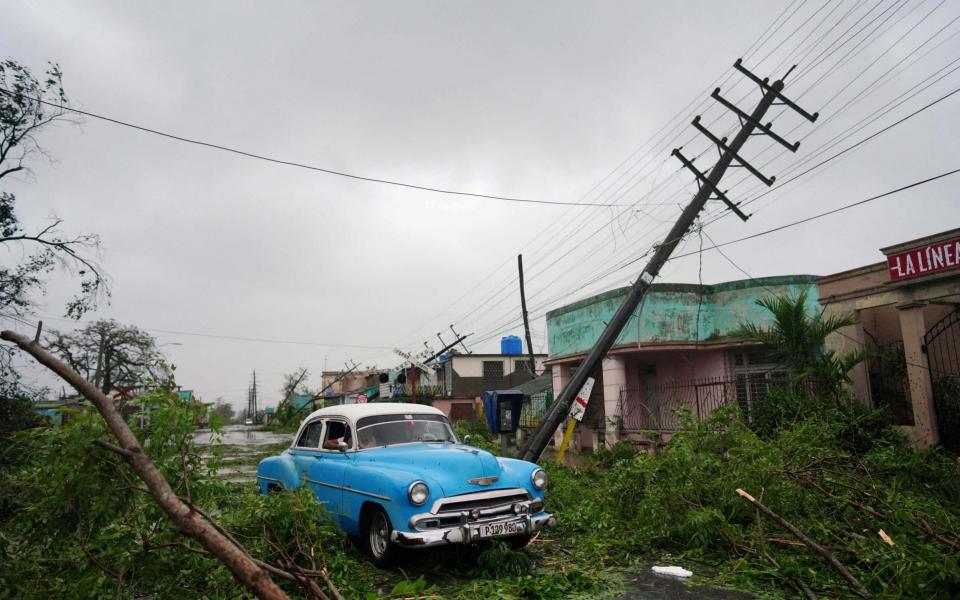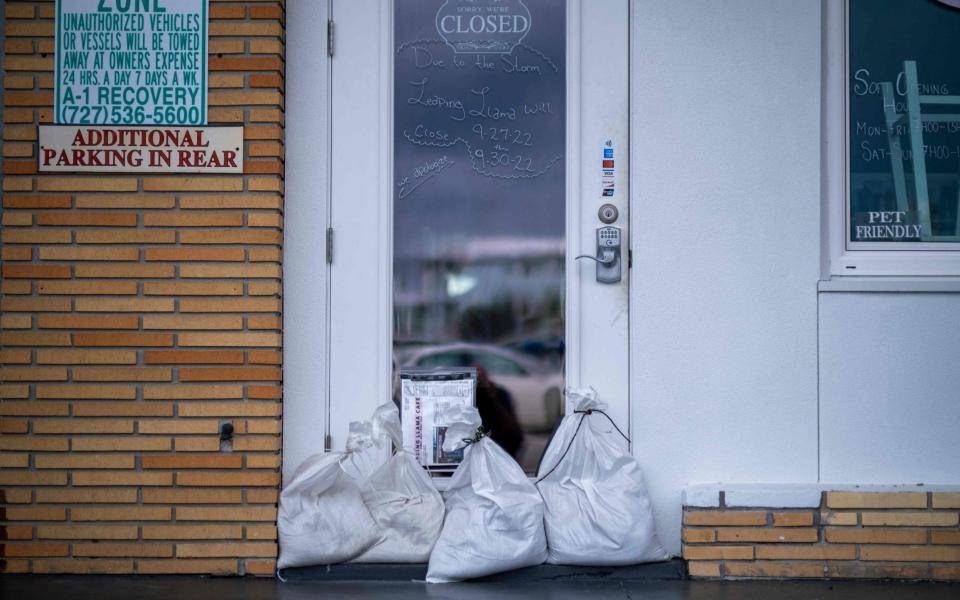Hurricane Ian upgraded to Category 4 as two million told to evacuate

Hurricane Ian strengthened to a Category 4 storm as it headed towards the US state of Florida on Wednesday, with forecasters warning of life-threatening storm surges and "devastating" winds after it reportedly killed two and left millions without power in Cuba.
As of 9 am GMT, mandatory evacuation orders had been issued in a dozen coastal Florida counties, with voluntary evacuation recommended in several others, according to the state's emergency officials.
In an advisory issued around the same time, the US National Hurricane Center (NHC) said "Ian has strengthened into an extremely dangerous Category 4 hurricane."
"Very recent data from an Air Force Reserve Hurricane Hunter aircraft indicate that the maximum sustained winds have increased to near 140 mph (220 km/h) with higher gusts," the NHC said.
Ron DeSantis, the Florida governor, warned of "catastrophic flooding".
Mr DeSantis added: "Mother Nature is a very fearsome adversary. It is a big storm, it is going to kick up a lot of water as it comes in. This thing's the real deal. It is a major, major storm."
Mr DeSantis spoke with Joe Biden by phone on Tuesday night and they discussed preparations for the storm. A White House spokeswoman said the two men - potential presidential opponents in 2024 - "committed to continued close coordination" over the hurricane.
Mr Biden said Ian "could be a very severe hurricane, life threatening and devastating in its impact".

Computer models suggested the worst hit area will be the 50 mile stretch between Sarasota and Fort Myers, to the south of Tampa, which could get a storm surge of up to 12ft. The area is home to miles of sandy beaches, resort hotels, and mobile home parks.
Tampa, a city of 400,000 people, was also expected to get a significant storm surge and up to 2ft of rain. If Ian strikes Tampa, it would be the first hurricane to make landfall there since 1921.
Pre-storm precautions included the closure of the Disney World and Sea World theme parks, while the Tampa Bay Buccaneers NFL team temporarily relocated to Miami.
Better video of the possible tornado at King's Point from a resident. Officials confirm two people were taken to the hospital. @WPBF25News pic.twitter.com/9mYlInMZwT
— Shayne Wright (@swrightwpbf) September 28, 2022
Nearby airports closed and over 2,000 flights have been cancelled.
On the other side of Florida, on the state's east coast, Nasa rolled a massive moon rocket it plans to test soon back off the launchpad and into protective storage.
Cuba left without power
On Tuesday, Ian hit Cuba's western regions for more than five hours with winds of up to 125mph. It damaged Cuba's decades-old electricity grid and plunged the entire island of 11 million people into darkness.
Lazaro Guerra, technical director of Cuba's Electricity Union, said on Tuesday night: "There is no electricity service in any part of the country right now."
He said the union would work through the night and into Wednesday to restore power as soon as possible.



Hirochi Robaina, a tobacco planter in San Juan y Martinez, said on Facebook: "It was apocalyptic, a real disaster."
A 70-year-old resident in the eastern Cuban city of Pinar del Rio, said: "Desolation and destruction. These are terrifying hours. Nothing is left here."
Havana appeared to have escaped the brunt of the storm, but it uprooted trees, flooded low-lying areas, and left many of the city's roads impassable.
Ian 'could gain strength before it hits Florida'
The US National Hurricane Center (NHC) said it expects Ian to gain strength before hitting the west coast of Florida as an "extremely dangerous" major hurricane.
It said Floridians should be prepared for "life-threatening storm surge, catastrophic winds and flooding".
The centre warned that "widespread catastrophic flash, urban, and river flooding is expected across central and west Florida".
I’ve just landed in Orlando ahead of hurricane Ian.
Moments after the flight touched down, the cabin filled with the disconcerting sound of the National Weather Service alarm as people turned on their phones.
The airport is packed. Most people are leaving. pic.twitter.com/nkd2aflMxQ— Jamie Johnson (@JamieoJohnson) September 28, 2022
The Pentagon said 3,200 national guardsmen had been activated in Florida to cope with the storm, and there would be an additional 1,800 later.
Officials in Tampa, Miami, and Fort Lauderdale have been distributing free sandbags to help residents protect their homes.
A total of 2.5 million Floridians have been ordered or advised to evacuate to higher ground.
Deanne Criswell, administrator of the Federal Emergency Management Agency [FEMA], said: "If people are told to evacuate by their local officials, please listen to them.
"The decision you choose to make may be the difference between life and death."
Renee Correa, a Tampa resident evacuating inland to Orlando with her daughter and chihuahua, said: "It's a monster and then there's the confusion of the path.
"Tampa has been lucky for 100 years, but it's a little scary now."

Kelly Johnson, who was preparing to ride out the storm at her home two blocks from a beach near Tampa, said she had an upstairs floor and a generator. "I'm a Floridian, and we know how to deal with hurricanes," she said.
"This is part of living in paradise, knowing that once in a while these storms come at you."
Mr DeSantis said 30,000 utility works have been positioned around the state, but it may take days before they can safely reach some of the power lines expected to be downed. He said nearly 100 hurricane shelters had been opened by Tuesday afternoon.
Hundreds of residents were being evacuated from several nursing homes in the Tampa area, and hospitals were also moving some patients. Nearly 60 Florida school districts were closed with many of the buildings turned into shelters.
Parts of Georgia and South Carolina also could see flooding rains and some coastal surge Friday into Saturday. Georgia Governor Brian Kemp pre-emptively declared a state of emergency, ordering 500 National Guard troops onto standby to respond as needed.
